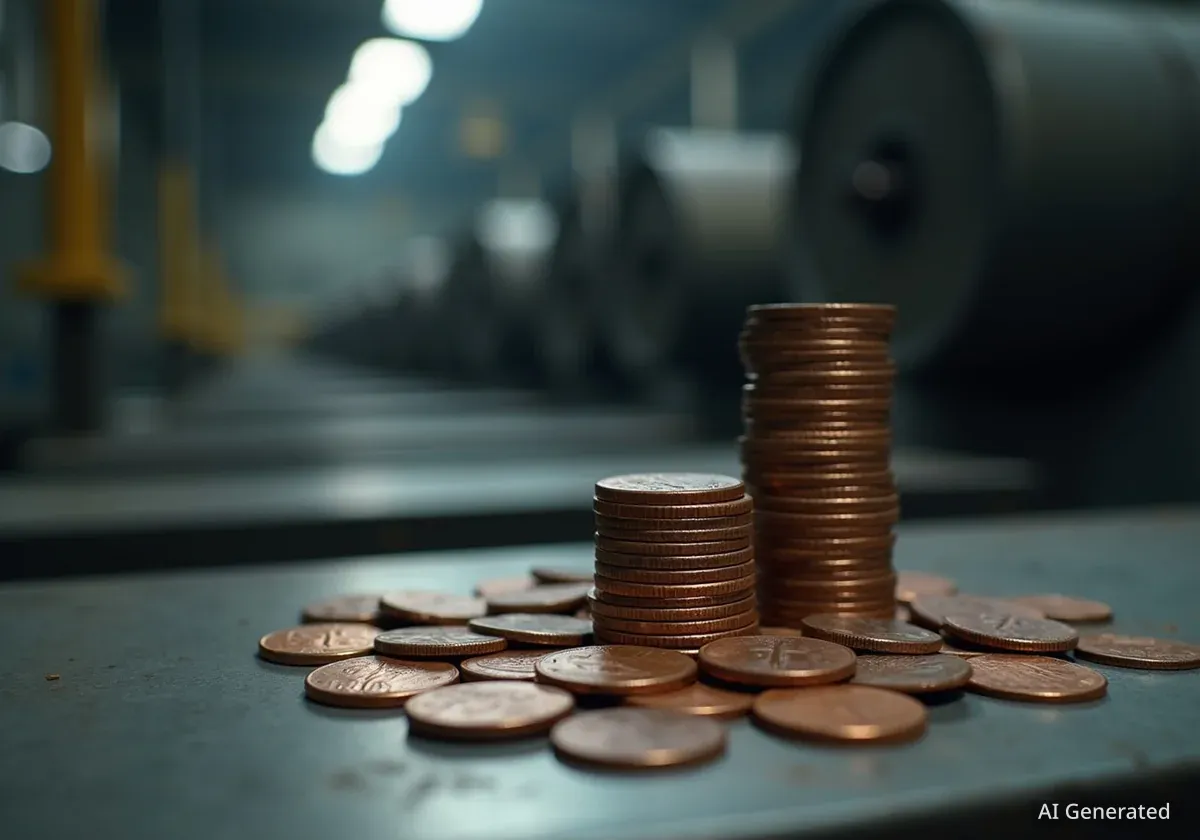Global markets are experiencing significant shifts as energy prices decline, the U.S. dollar shows signs of a potential rebound, and precious metals recover from recent losses. Traders are closely monitoring key technical levels and supply-demand fundamentals across oil, natural gas, and currency markets, while the cryptocurrency sector watches for institutional developments.
Key Takeaways
- Natural gas futures continue to fall, with forecasts indicating potential for a deeper price correction.
- Crude oil markets are facing downward pressure from both technical indicators and increasing supply concerns.
- The U.S. Dollar Index (DXY) is attempting a recovery, targeting a key moving average as a resistance level.
- Gold prices have rebounded after a two-day decline, suggesting buyers are stepping back into the market.
- Speculation around a potential BlackRock-backed XRP spot ETF is influencing sentiment in the cryptocurrency market.
Energy Markets Face Headwinds
The energy sector is currently defined by a bearish outlook, with both natural gas and crude oil prices facing significant downward pressure. These movements are driven by a combination of weather forecasts, supply data, and technical market patterns that suggest the path of least resistance is lower for the near term.
Natural Gas Prices Continue to Slide
Natural gas futures have extended their recent decline, signaling weakening sentiment among traders. The latest price action confirms a breakdown from key support levels, opening the door for a more substantial pullback. Weather forecasts, which are a primary driver for natural gas demand, have been a significant factor in this trend.
Milder temperature outlooks for key consumption regions in the United States and Europe have reduced expectations for heating demand. This has allowed inventories to build, putting sustained pressure on prices. According to market analysts, the recent weekly breakdown on price charts is a strong technical signal that sellers are in control.
Inventory Levels
Rising natural gas storage levels often precede price drops, as it indicates that supply is outpacing demand. Traders watch weekly inventory reports from the Energy Information Administration (EIA) for clues on market balance.
Unless a significant shift in weather patterns occurs or an unexpected supply disruption emerges, the current trajectory for natural gas prices appears to be pointed lower. Traders are now watching the next major support zones to see if buyers will re-emerge at lower price points.
Bearish Outlook Deepens for Crude Oil
Crude oil markets, including both Brent and WTI benchmarks, are also experiencing a bearish phase. The decline is attributed to a convergence of negative factors, including technical chart patterns and fundamental supply-side pressures. Prices have broken below critical support levels, reinforcing the negative sentiment.
On the supply side, concerns about a potential global economic slowdown are weighing on demand forecasts. At the same time, production from key non-OPEC countries remains robust, contributing to a well-supplied market. This dynamic creates a challenging environment for prices to sustain any upward momentum.
"We are seeing a clear alignment of technical and fundamental pressures on oil. The break of recent lows suggests that sellers have the upper hand, and any rallies are likely to be met with resistance until the supply-demand picture changes."
- Commodity Market Analyst
From a technical perspective, oil prices are trading below key moving averages, which is often interpreted as a bearish signal by chart analysts. The failure to reclaim these levels has emboldened sellers and led to further price erosion.
Currency and Precious Metals Diverge
In the foreign exchange and precious metals markets, a different story is unfolding. The U.S. dollar is showing signs of a tentative recovery, while gold has managed to bounce back from recent selling pressure, highlighting a complex interplay of investor sentiment and macroeconomic factors.
US Dollar Index Attempts a Rally
The U.S. Dollar Index (DXY), which measures the greenback's strength against a basket of major currencies, is in the midst of a short-covering rally. After a period of decline, the index is now targeting the 50-day moving average, a significant technical level that could act as resistance.
What is the DXY?
The DXY is a key indicator of the U.S. dollar's international value. A rising DXY means the dollar is strengthening against other major currencies, which can have wide-ranging effects on global trade and commodity prices, as many commodities are priced in dollars.
A move above this moving average, currently cited around the 98.082 level, could signal that the dollar's recent downtrend is losing steam. Such a recovery could be driven by shifts in interest rate expectations or safe-haven demand stemming from broader market uncertainty.
Traders are watching to see if the rally has enough strength to break through this technical barrier. A failure to do so could see the dollar resume its downward path, while a successful breach could pave the way for further gains.
Gold Rebounds as Buyers Return
After a two-day pullback, gold (XAU/USD) has found its footing and is rebounding. The precious metal has regained control, with buyers stepping in to defend key support levels. This resurgence suggests that underlying demand for gold as a safe-haven asset and inflation hedge remains intact.
The recent dip in prices appears to have been viewed as a buying opportunity for many market participants. The ability of gold to bounce back quickly is often seen as a sign of a healthy uptrend. The price action is now being watched to see if gold can challenge its recent highs.
The performance of the U.S. dollar will be a key factor for gold moving forward. Typically, a weaker dollar is bullish for gold, as it makes the dollar-denominated metal cheaper for holders of other currencies. Conversely, a strong dollar rally could create headwinds for gold prices.
Cryptocurrency Market Eyes Institutional Moves
In the digital asset space, market sentiment is often driven by news of potential institutional adoption. Recent speculation surrounding Ripple's XRP and investment giant BlackRock has captured the attention of cryptocurrency traders.
Speculation Mounts Over a BlackRock XRP ETF
Following the approval of a Grayscale trust (GLS), the crypto community is buzzing with speculation about whether BlackRock, the world's largest asset manager, might enter the race for an XRP spot exchange-traded fund (ETF). While there has been no official confirmation from BlackRock, the possibility alone is enough to generate interest in XRP.
- Institutional Interest: An ETF from a major player like BlackRock would represent a significant step toward mainstream acceptance for XRP.
- Increased Accessibility: It would provide a regulated and straightforward way for both retail and institutional investors to gain exposure to the digital asset.
- Market Impact: The mere rumor of such a development can lead to increased volatility and trading volume for the associated cryptocurrency.
This development highlights the growing intersection between traditional finance and the digital asset industry. As more established financial institutions explore crypto products, it could pave the way for greater capital inflows and market maturity over the long term. However, traders remain cautious, as speculation does not always translate into reality.





